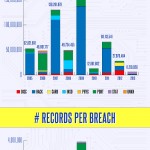This post is a little further afield than my typical subject matter but I think it is of interest to our readership.
Ultimately end-user online consumption habits (and capabilities) are fundamental to nearly everything that takes place within a data center or a cloud.
Posted by Jeff John Roberts on the Gigaom website.
Emphasis in red added by me.
Brian Wood, VP Marketing
——
FCC report shows ISPs faster than ever, but congestion a problem
Summary: How fast is your ISP compared to other services? The FCC’s annual broadband report is out, and it provides answers to this and many other broadband questions.
The good news is that, overall, the country’s average broadband speed is 36 percent faster than what it was in 2012.
The bad news is that DSL subscribers are getting left out of the party, and that severe congestion points are making life worse for everyone on the internet.
Those are some of the key takeaways from the FCC’s 2014 Measuring Broadband America Report, an annual publication that provides a welcome look at the country’s internet plumbing, including how ISPs live up to what they promise. The study involves the FCC collecting data from the routers of household volunteers across the country.
One significant finding is that the average household broadband speed is now 21.2 Mbps, compared to 15.6 Mbps in 2012, and that consumers are migrating to faster tier packages. This chart shows what percentage of people in various tiers in September 2012 have since upgraded to higher speeds:
The report also shows more granular data that compares different ISPs. This chart shows how various ISPss meet their advertised upload and download speeds during peak hours:
As the FCC explains in the report, most of the ISPs, on average, perform as promised over 90 percent of the time. Four DSL providers – Verizon DSL, CenturyLink, Frontier DSL and Windstream — do not, however.
On a briefing call, an FCC executive suggested the CEOs of the DSL providers and other laggards can expect to receive a letter from the agency asking to them to explain their performance. He also suggested that the failure of DSL ISPs to improve may result from the relative cost of upgrading DSL infrastructure compared to cable and fiber systems.
This year’s report also offers a new metric that shows the consistency of the ISPs’ performance. This chart shows which companies were able to deliver or surpass their advertised speed to 80 percent of households 80 percent of the time during peak hours. Only Cablevision and Verizon Fiber could meet this metric:
While the FCC report offers important information into the companies’ relevant performance, it does not answer the question, which is most on the lips of telecom types these days: Who is responsible for video service slow-downs that have given rise to very public fights between Netflix on one side and companies like Verizon on the other?
According to the FCC, the agency is seeing “very severe congestion at specific points” but is for now unable to provide an analysis of what it is causing them. But it will release raw data on Wednesday that others can use to obtain insight.
This last bit is important because it will shine more light on the touchy topic of peering, which describes connection points at which ISPs plug into other parts of the internet, and has led to fights over who should pay for maintaining those connections. So far, the FCC’s annual data gathering report has not focused on congestion related to these connection points, in part because they have been considered beyond the control of the ISPs:
First, our existing policy is to exclude measurements from our Report known to have been collected from a degraded measurements infrastructure affecting our testing. Our prior experience had been that such degradations were the result of network faults which were soon corrected and outside the scope of an ISP’s control.
This is likely to change, as the agency says it will focus more attention on these congestion points.
The report also includes first-time data on the performance of satellite ISP’s, and much more. Here’s a copy:
2014 Fixed Measuring Broadband America Report
http://gigaom.com/2014/06/18/fcc-report-shows-isps-are-faster-than-ever-but-congestion-is-a-problem/















